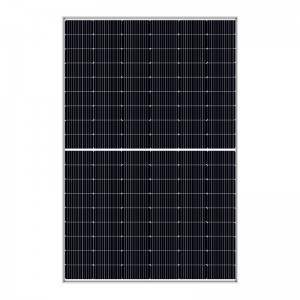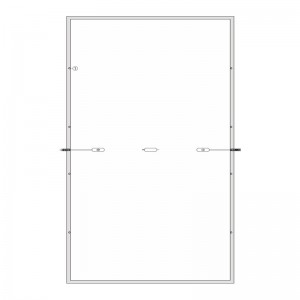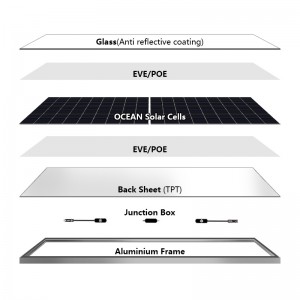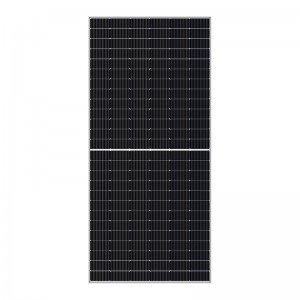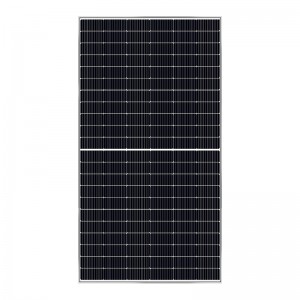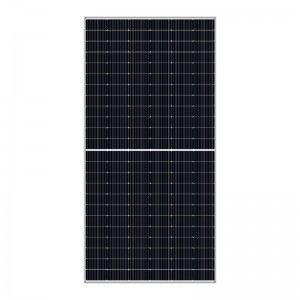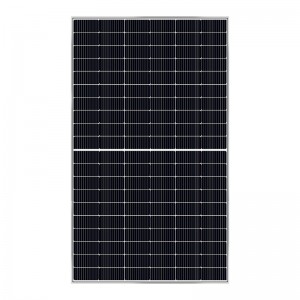M10 MBB,N-Tpye TopCon 108 half cells 420W-435W solar module
Ultra-high Power Generation/Ultra-high Efficiency
Enhanced Reliability
Lower LID / LETID
High Compatibility
Optimized Temperature Coefficient
Lower Operating Temperature
Optimized Degradation
Outstanding Low Light Performance
Exceptional PID Resistance
| Cell | Mono 182*91mm |
| No. of cells | 108(6×18) |
| Rated Maximum Power(Pmax) | 420W-435W |
| Maximum Efficiency | 21.5%-22.3% |
| Junction Box | IP68,3 diodes |
| Maximum System Voltage | 1000V/1500V DC |
| Operating Temperature | -40℃~+85℃ |
| Connectors | MC4 |
| Dimension | 1722*1134*30mm |
| No.of one 20GP container | 396PCS |
| No.of one 40HQ container | 936PCS |
12-year warranty for materials and processing;
30-year warranty for extra linear power output.

* Advanced automated production lines and first-class brand raw material suppliers ensure that solar panels are more reliable.
* All series of solar panels have passed TUV, CE, CQC, ISO,UNI9177- Fire Class 1 quality certification.
* Advanced Half-cells, MBB and PERC solar cell technology, higher solar panel efficiency and economic benefits.
* Grade A quality, more favorable price, 30 years longer service life.
Widely used in residential PV system, commercial & industrial PV system, utility-scale PV system, solar energy storage system, solar water pump, home solar system, solar monitoring, solar street lights, etc.
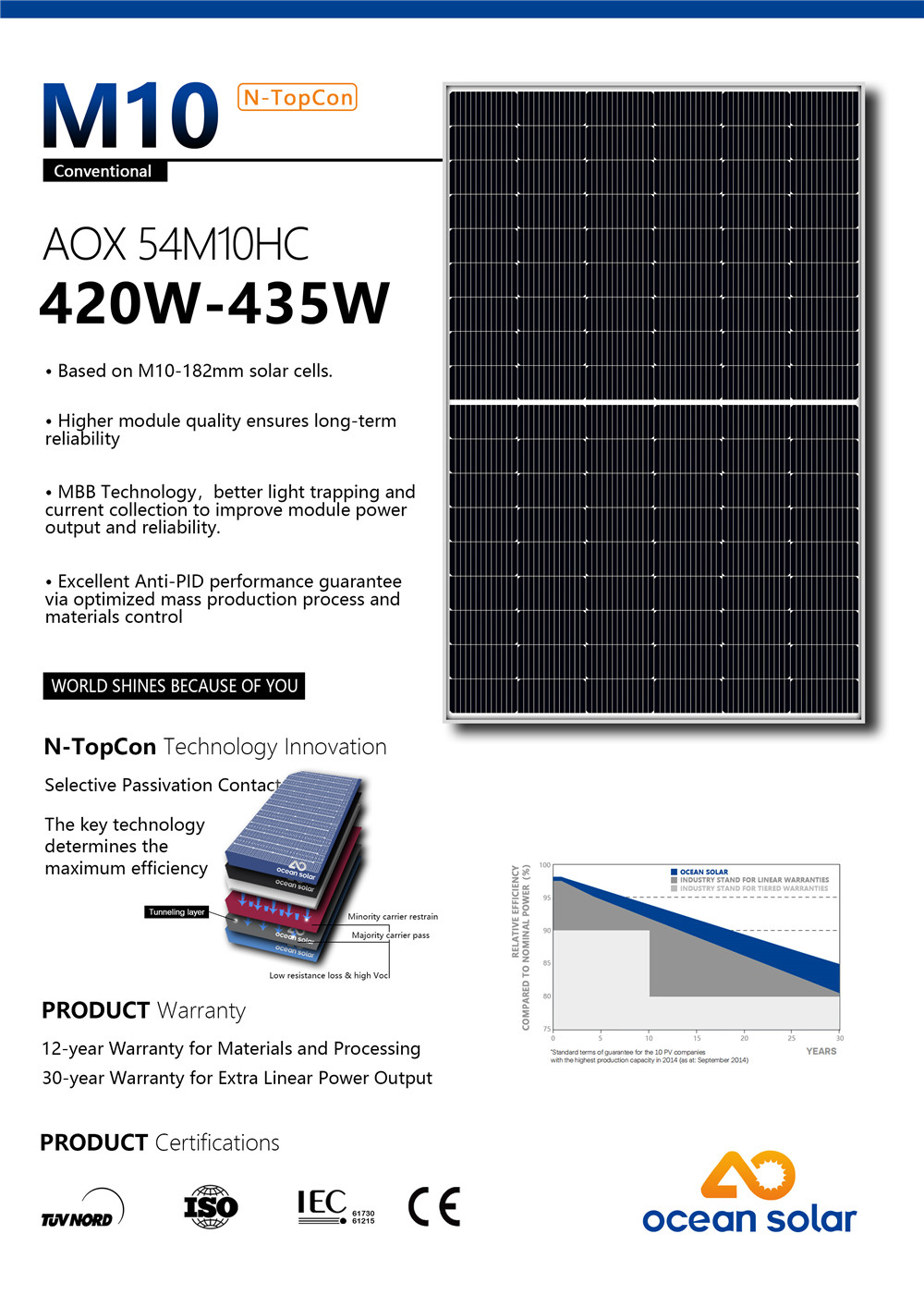
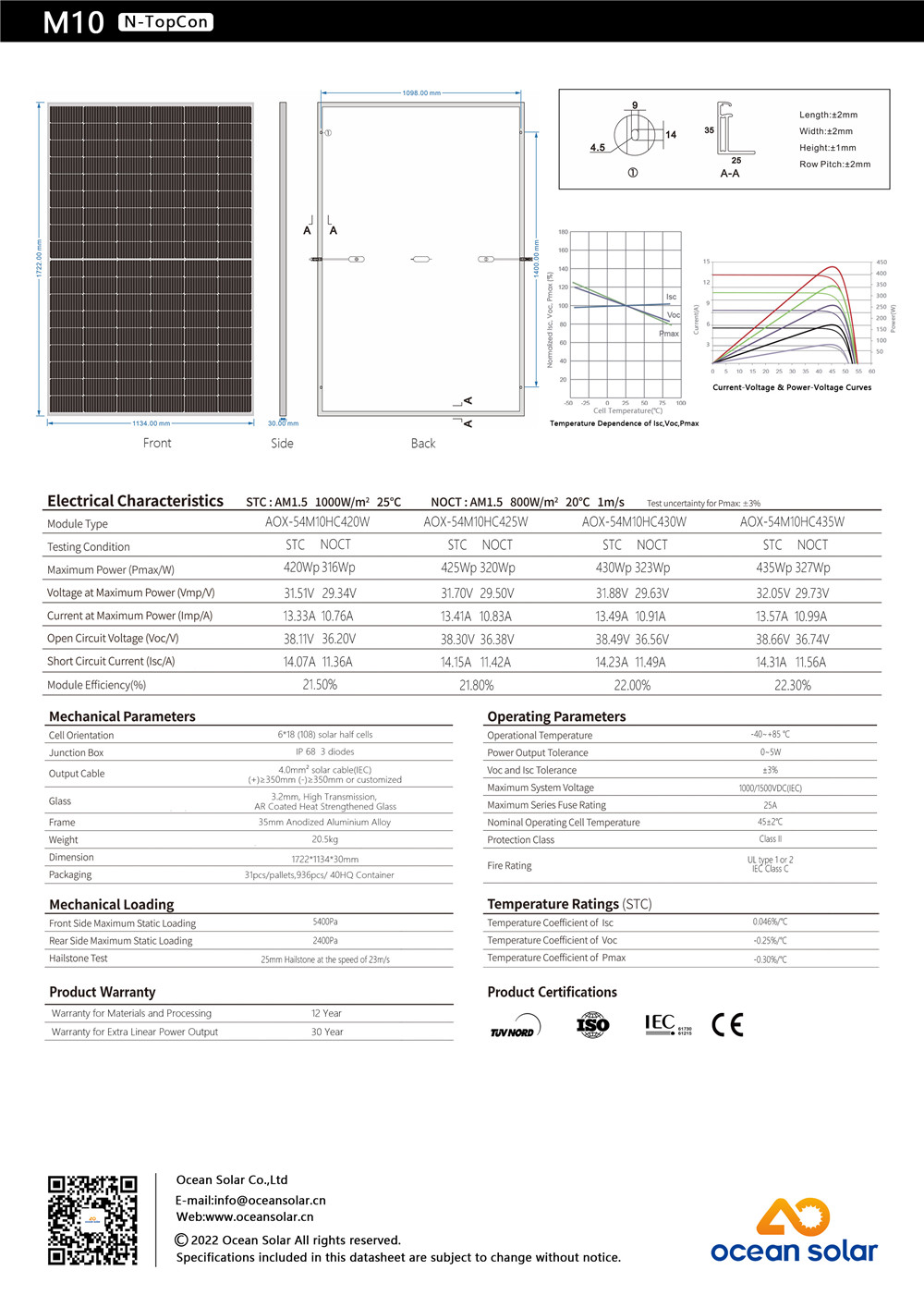
TOPCon (Tunnel Oxide Passivated Contact) solar cells are a high-efficiency photovoltaic technology that represents a major improvement over conventional solar cell designs. The design of the TOPCon cell involves a tunnel oxide layer positioned between a thin silicon contact layer and the emitter layer. The tunnel oxide layer provides a low-resistance path for charge carriers to transfer from the silicon contact layer to the emitter layer, thereby improving energy conversion efficiency.
The basic structure of a TOPCon solar cell consists of a p-type silicon substrate topped with a thin n-type silicon layer. This is followed by a thin layer of tunnel oxide, typically less than 5 nanometers thick. On top of the tunnel oxide layer is an n-type doped layer, which forms the emitter of the solar cell. Finally, a metal contact grid is placed on the front surface of the cell to collect the generated charge carriers.
One of the main advantages of TOPCon solar cells is the high passivation quality of the tunnel oxide. This mass results in fewer recombination sites for excited charge carriers, reducing energy loss and increasing efficiency. In addition, the low-resistance path provided by the tunnel oxide layer enables efficient carrier transport from the silicon contact layer to the emitter, further improving efficiency.
Another advantage of TOPCon technology is the absence of front surface fields. Conventional solar cells often include heavily doped regions on the front surface to facilitate the transfer of charge carriers, which results in a loss of efficiency. The TOPCon design eliminates this problem by facilitating carrier transport through the tunnel oxide, thereby improving performance.
In terms of efficiency, TOPCon solar cells achieved a world-record conversion efficiency of 25.0% in a laboratory environment, compared to the highest efficiency of 23.4% for conventional silicon solar cells. This efficiency improvement translates into increased energy output and reduced solar power costs.
TOPCon solar cells also have higher durability and stability. The tunnel oxide layer effectively passivates the silicon surface, thereby reducing the degradation of carrier lifetime over time. This results in longer life and lower maintenance costs than conventional solar cell designs.
One of the main challenges of TOPCon's design was the additional complexity involved in producing the tunnel oxide layer. This process can be more expensive and time-consuming than producing traditional solar cell designs. However, the potential for increased efficiency and reduced maintenance costs makes the technology an attractive option for large-scale solar cell production.
Overall, TOPCon solar cells represent a major development in photovoltaic technology, offering many benefits in terms of efficiency, durability, and stability. As production costs continue to decrease and efficiencies increase, TOPCon solar cells may become an increasingly common and desirable option for solar power generation.


